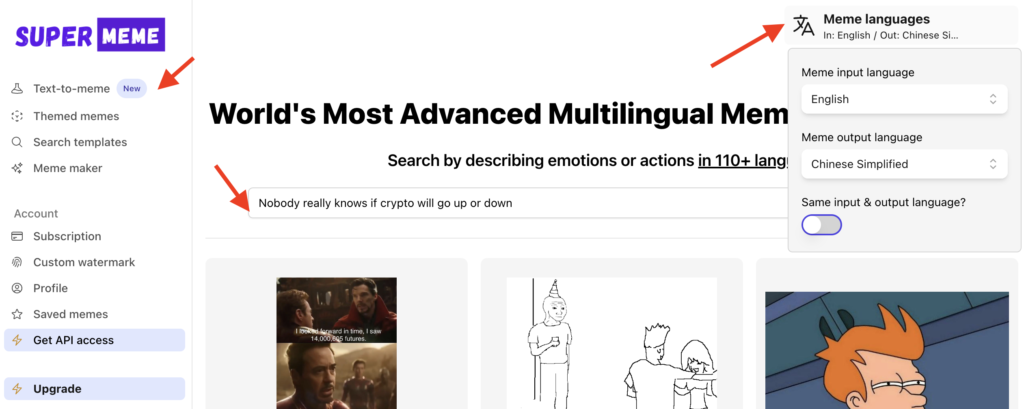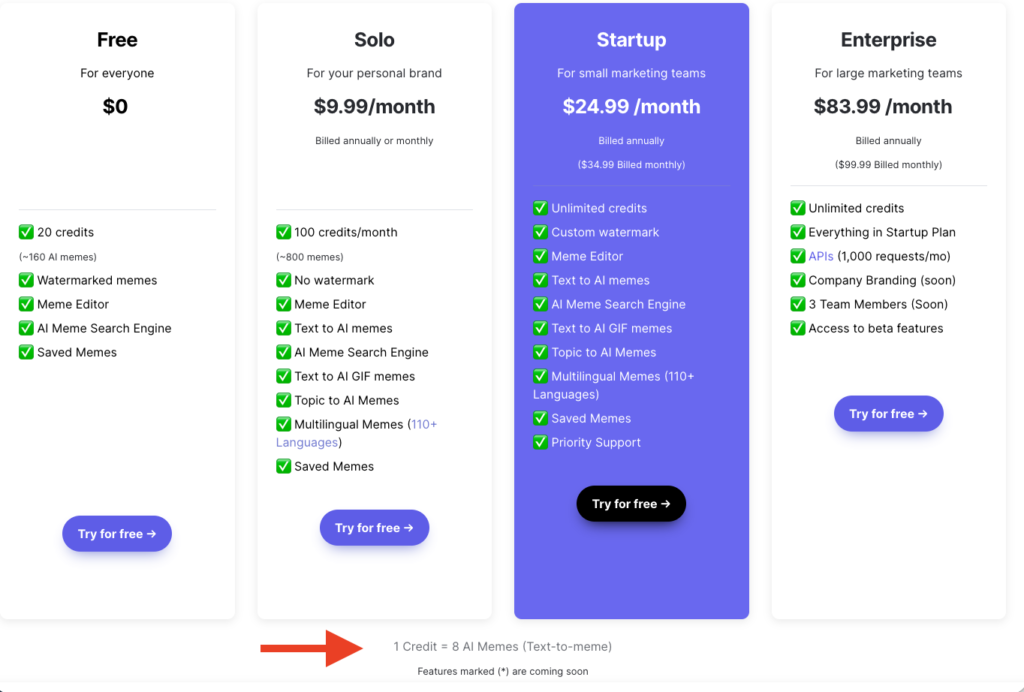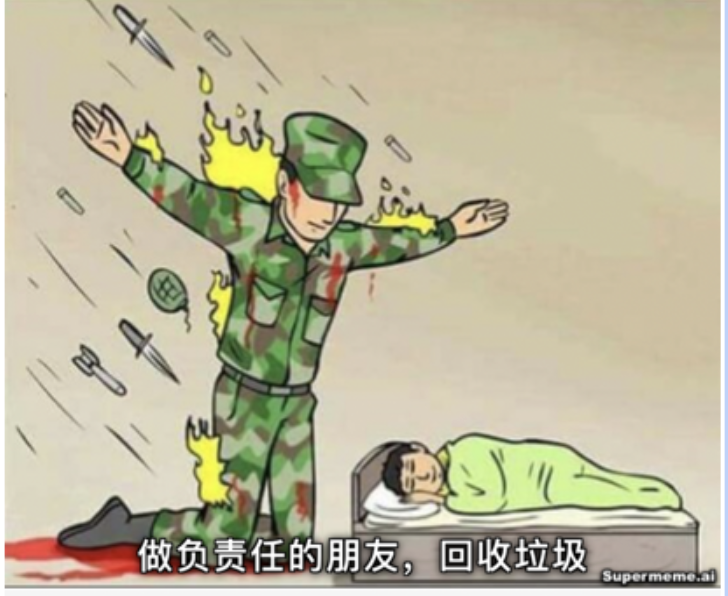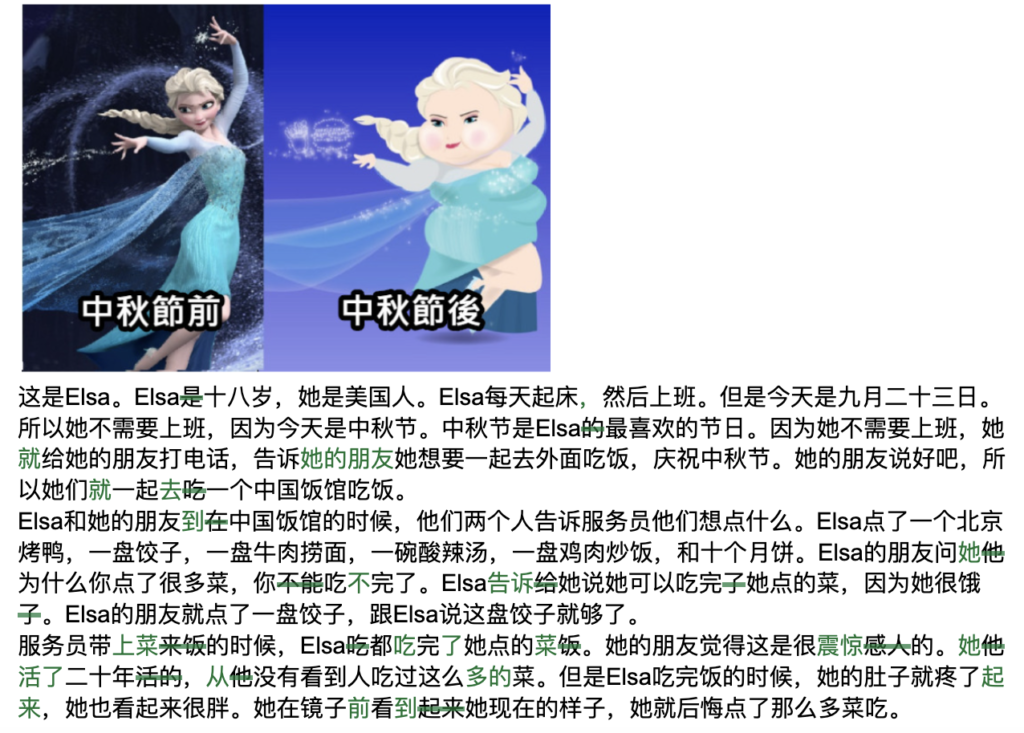Memes in Language Classrooms: From Traditional to AI-Generated
By Wenjing Huang, Chinese Teacher, George School

DOI: https://www.doi.org/10.69732/RKON2834
Introduction
In recent years, memes have become a popular internet trend. They are widely used to share feelings or ideas in a humorous way. Memes typically consist of an image or video containing superimposed text that conveys a clever pun or play on words.
Why Memes?
Given that memes have become rather ubiquitous and are a preferred mode of communication on social media, they can also be found in many classrooms as well as in language learning. Incorporating memes in education has been shown to be beneficial by:
- increasing students’ attention, interest, and creativity (Kayali and Altuntas, 2021);
- helping students build vocabulary and boost memory retention (Kayali and Altuntas, 2021);
- reducing students’ anxiety while learning a new language (Kayali and Altuntas, 2021);
- increasing students’ motivation, engagement, and productivity (Zakharova, 2021);
- Expanding students’ understanding of the target language culture (Han and Smith, 2023).
Traditional Ways of Using Memes
Traditionally memes found online or created by using meme-generating websites are presented in language classrooms in a variety of ways.
Teaching vocabulary
Memes provide an easy way to learn new words and phrases, especially for novice-level learners. For example, the meme below shows three different heartbeat pictures with corresponding Chinese texts of spring break, summer break, and vacation plan from top to bottom. The second Chinese character in each of these three new words are the same, which helps learners recognize and remember it.

Teaching grammar concepts
Memes are an effective complement to grammar lessons in the language curriculum because they help learners pay attention to grammar rules with a humorous and memorable presentation within an image. For example, in Picture 2, two memes I made from a popular meme template demonstrate three common Chinese grammar particles and how to use them to intermediate level learners.
The meme generator website that I used is https://imgflip.com/memegenerator. Users can select a template or upload a new template, type their texts, and create a meme in seconds.
|
|
|
Teaching culture
In terms of teaching culture, authentic internet memes can convey target-language cultural information and help learners to further develop their intercultural communication skills. For example, in Picture 3, a meme is used to emphasize the importance of environmental protection, which connects to both the theme of Global Challenges in the AP Chinese Language and Culture as well as that of Sharing the Planet in the IB Chinese B curriculum. Specifically, this meme explains and summarizes in a humorous way how to sort out four types of trash in a Chinese city from the perspective of a pig:
Wet trash is what pigs can eat.
Dry trash is what pigs don’t want to eat.
Harmful trash is what happens after pigs eat it, because they will die.
Recycling trash is if you sell it, you will earn money, which you can use to buy more pigs.

Others
In addition to meeting the mentioned teaching functions, memes are also a useful educational device to explain class expectations and support social-emotional learning. For example, in Picture 4, a Chinese meme with phrases that are appropriate for novice learners is used to convey the differences between teaching, learning, and testing. Also, Picture 5 shows emotions felt on Monday mornings, contrasting those of Friday afternoons. Learners from a level 1 course would be able to read and understand these ideas during their first month of the curriculum when they are learning vocabulary related to weekdays and times of the day.


AI-Generated Memes
Nevertheless, challenges may emerge when using memes in teaching. Firstly, finding and/or creating level-appropriate memes can be time-consuming, and given that humor is rather idiosyncratic, their appeal might be limited in some cases. To meet these ends, one solution may be the use of Artificial Intelligence (AI). AI-generated memes can greatly reduce meme preparation time while offering a wide range of creative possibilities.
For example, you can use supermeme.ai. It is a website containing AI meme generators that let users generate memes by simply typing text. It leverages the power of GPT-3 to write meme-appropriate captions and it provides quality templates. Users can log in with their Google account. Free trials are available for new users to create AI memes with 20 credits, which translates to 160 AI memes (1 credit = 8 AI memes (Text-to-meme). You might be able to receive more credits to test this if you receive an email from them to ask “Do you need additional credits?” after your free trial is over.
After logging in, start by using the “Text-to-meme” function: first specify the language that you would like your memes to be in in the top right corner (specify input and output languages), and then type your text prompt in the middle search bar. Currently Supermeme supports 110+ languages. The other features included are themed memes, search templates, and a meme maker.


Once memes are generated, users can download (no watermarks), edit, copy, or save them. You are also strongly recommended to first save or download the ones you want right away, as there is no history function in the app.
If the generated meme texts do not fit properly, are not culturally appropriate, if text is appearing with more than one line or appearing on top of memes that already have English text on them, you can always edit any of the two captions provided or add new text (which is the third caption), header, and footer as well as change the font color, border color, font family, and font size.

With this easy-to-use tool, meme-related activities or formative assessments can be integrated in class much more easily and quickly. For example, the first two meme activities below can be done as a warm-up or as a cool-down. You may find that students are interested in creating course-related memes by using traditional or AI-generated meme websites.
Below are ideas for ways that these memes can be used in your language classroom:
Same topic, different memes
Students can create memes based on a topic such as “back to school.”



Same meme, different texts and topics
Students add text based on a meme’s image.
For example, I gave a mixed-level class a meme template in a shared Google Slides presentation. Students were asked to create their own text on different pages of that shared Google Slides presentation for a meme image that I presented to them. Here are three students’ sample work in Picture 10, displaying three different texts that complete this meme. I then carried out a follow-up activity consisting of arranging these memes and other memes students created for different topics and presenting them in the language department or showcasing them on a Chinese course bulletin board in the hallway, which usually attracts different levels of Chinese learners as well as native Chinese students for viewing and discussing in a fun way.
Student a: a review topic – travel
Student b: current topic – environmental protection
Student c: a topic from daily life



For this activity, if you are using Supermeme (supermeme.ai), instead of using “the text to meme”, you can try “search templates” to search for an example of an emotion, action, or topic. These results might provide additional options and better quality content than just using “the text to meme”.
Voting for the best or most appropriate meme generated
Students are given a few AI generated memes to read and then they vote for their favorite ones. Depending on their level, they can be asked to provide their reasons for their preferences as well.
For example, there are four AI-generated memes in Picture 10 by Supermeme based on the input of “Mid-Autumn Festival” and “mooncakes” written in Chinese in the text prompt. The English translations of these texts are below. In general, these AI-generated prompts are culturally appropriate and relevant with a mix of simple and difficult vocabulary (from the view of intermediate-low level).
- I saw the mooncake buffet during Mid-Autumn Festival
- When you remember that now is mooncake season
- When you realize it’s time to eat mooncakes again
- Send mooncakes to everyone in China during Mid-Autumn Festival, for example…
A sample of four students’ favorite one among these four are:
Student 1: B
Student 2: B
Student 3: C
Student 4: C

Students described the reasons for the memes being their favorites.
Student 1: 这张图片的笑点是,你记得现在是中秋节(月饼节)你非常开心。我喜欢这个图片因为这个宝宝很可爱。 (The funny part of this picture is that you remember that it is the Mid-Autumn Festival (Moon Cake Festival) and it makes you very happy. I like this picture because the baby is cute.)
Student 2: 我很喜欢B,因为那个孩子看起来对月饼很兴奋,很搞笑。(I like B very much because the child seems to be excited about mooncakes. Very funny.)
Student 3: 我最喜欢这张图C,因为他们看起来很高行兴,让我笑。(I like this picture C best because they look cheerful and make me laugh.)
Student 4:我最喜欢Meme C,因为Minions很可爱。我喜欢这个照片,因为我和我的朋友也都喜欢吃月饼,所以我们吃月饼的时候,会和Minions的表情一样。(I like Meme C best because Minions are cute. I like this picture because my friends and I also like to eat mooncakes, so we will have the same expression as the Minions when eating mooncakes.)
Choosing one meme and revising its text
Following the above activity 3, students choose one AI-generated meme, perhaps their favorite one, and create a new text to better interpret the meme image.
For example, following activity 3, each of the four students chooses and adds their new text.

Student 1’s text: 宝宝第一次过中秋节的时候:(The first time the baby celebrated Mid-Autumn Festival:)
Student 2’s text: 妈妈说月饼做完了。(Mom said the mooncakes were done.)
Student 3’s text: 我的反应当我看到了红豆月饼。(My reaction when I saw red bean mooncakes.)
These student work samples show that three students created their text from three different angles: from the baby’s perspective, from the audience’s perspective, and from their own perspective. They also include information about the holiday and food related to the holiday (i.e., mooncakes). Thus, a diversity of vocabulary and content are present and these student created memes are rather appealing options with the cultural product or practice compared to AI-generated ones. This can help students begin to think critically about human-developed versus AI-developed content.

Student 4’s text: 我的朋友说“你喜欢月饼吗”,我的反应。。。(My friend said “Do you like mooncakes?”, my reaction …)
The student work sample provided in Picture 13 focuses on a conversation between two people while additionally using the new vocabulary term “reaction”. This word was also used in student 3’s new text, which is a term that students did not know beforehand, but they had read it in previous memes. Admittedly, it is often a common word that appears in Chinese memes. From this point of view, reading AI-generated memes may to some degree help learners expand their vocabulary and apply the terms organically in their own writing.
Evaluating AI-generated memes under the same topic
Students are given a few AI-generated memes under the same text prompt. They read them and comment on them one by one by providing their own rationales.
For example, in picture 12, three AI-generated memes related to the topic of recycling trash are displayed. This topic is particularly difficult for students to interpret and understand. The sample comments for these three memes are from an advanced-mid level Chinese heritage student, which are more suitable for explanation and analysis than AI-generated memes.

Student’s comments: 我觉得这个meme很不好。图片里的文字说“当你最终说服你的朋友开始回收时”,那这张图片应该是一个人在庆祝自己的胜利。
English translations: I think this meme is not good. The words in the meme say “when you finally convince your friends to start recycling”, so this picture should be a person celebrating his victory.

Student’s comments: 这张图片的文字应该是, 我是一个负责任的朋友。
English translations: The text of this picture should be “I am a responsible friend.” (The original text in the meme says “be a responsible friend, recycle trash”.)

Student’s comments: 这张图的的文字应该是,“你在捡垃圾时候的样子”。
English translations: The text of this should be “What you look like when you pick up trash”. (The original text in the meme says “what you look like when you push trash around”.)
Interpreting meanings based on a given meme
Students read and write their interpretations of a given meme.
Picture 13 is a sample of student work created by a heritage speaker with advanced-mid Chinese proficiency. This interpretation was completed during the first week of school. The student could not only paraphrase the title and create with language to explain each of the four parts of this meme clearly, but they also use a key word “laugh point” in Chinese, which normally comes from the daily life experience of Chinese culture.

The English translation of this writing sample is:
The title of this MEME is “the fastest thing in the world”. There is a leopard in the upper left corner, a plane in the upper right corner, and light in the lower left corner. These three things are fast, but one is faster than the other. The laugh point of this MEME is that summer vacation is over and it is faster than the speed of light. It means that the summer vacation is over at a glance.
Writing a story based on a given meme
Students read and interpret a given meme, then they write a story to describe this meme with the name(s) of the main characters, the time, and location of the story.
In this example, students see a meme which is presenting one character from the American movie Frozen with the Chinese caption of “before Mid-Autumn Festival” and “after Mid-Autumn Festival” from left to right. They read between lines and come up with a detailed story using connected sentences to describe what has happened based on their imaginations.

The English translation of this writing sample (with teacher’s edits in green) are below. To clarify, the instructor feedback is focused on the vocabulary of this story so that it is mostly varied and appropriate, the language is mostly accurate with occasional errors that do not interfere with communication, the ideas are developed with details and relevant to the task, and the information is clearly presented in a logical manner.
This is Elsa. Elsa is eighteen. She is American. Elsa gets up every day, then goes to work. But today is September 23rd. So she doesn’t need to go to work, because today is the Mid-Autumn Festival. Mid-Autumn Festival is Elsa’s favorite festival. Because she didn’t need to go to work, she called her friend and told her friend that she wanted to go out for dinner to celebrate the Mid-Autumn Festival. Her friend said OK, so they went to a restaurant in China for dinner.
When Elsa and her friend arrived at a Chinese restaurant, they told the waiter what they wanted to order. Elsa ordered Peking duck, a plate of dumplings, a plate of beef noodles, a bowl of hot and sour soup, a plate of fried rice with chicken, and ten moon cakes. Elsa’s friend asked her why did you order so many dishes that you couldn’t finish them? Elsa told her that she could finish her order because she was hungry. Elsa’s friend ordered a plate of dumplings and told Elsa that this plate of dumplings was enough.
When the waiter brought the food, Elsa finished her order. Her friend felt this was impressive. She has lived for twenty years and has never seen anyone eat so much food. But when Elsa finished eating, her stomach began to hurt, and she looked very fat. When she saw her now in the mirror, she regretted ordering so many dishes.
In summary, here is a chart that compares these meme-related activities in the aspects of using traditional or AI-generated memes websites, with learners’ proficiency levels and modes of communication included.
| Activities | Traditional or AI Generated Memes | Learners’ Proficiency Levels | Modes of Communication Included |
| 1. Creating memes under the same topic given | Both | For any level starting from novice | Presentational |
| 2. Creating memes based on the same template given | Both | For any level starting from novice | Presentational |
| 3. Voting for favorite memes | AI-generated | For intermediate-low or above | Interpretive |
| 4. Revising a meme’s texts | AI-generated | For intermediate-low or above | Presentational |
| 5. Evaluating multiple memes | AI-generated | Ideally for intermediate-mid or above | Interpretive and presentational |
| 6. Interpreting a meme | Both, but you might need more time to search appropriate traditional ones online | For intermediate-low or above | Interpretive and presentational |
| 7. Writing a story for a meme | Both, but you might need more time to search appropriate traditional ones online | Ideally for intermediate-mid or above | Interpretive and presentational |
Conclusion
Memes are a powerful humorous and visual tool that are valuable for language curriculum as they grab learners’ attention, engage them in language interpretation and production, and boost learners’ target-language memory. Whether a meme provides context for vocabulary and grammar or is merely for reflecting on cultural nuances, slang, and trends, memes offer a window for learners in classes from the novice level and higher to engage with the target language.
References
Kayali, N. K., & Altuntas, A. (2021, May 31). Using memes in the language classroom. Shanlax International Journal of Education. https://eric.ed.gov/?id=EJ1300464
Zakharova, O. (2021). Internet memes as a way of developing future engineers’ motivation to study a foreign language in their professional activity. Educational and Pedagogy Journal, 2(2),57-65.
Han, Y., & Smith, B. E. (2023, February). An ecological perspective on the use of memes for language learning. Language Learning and Technology. https://www.lltjournal.org/item/10125-73507/
Mulla, T. (2022, October 1). Using Memes in the Classroom as a Teaching Methodology. https://www.scroogemarketer.com/post/using-memes-in-the-classroom-as-a-teaching-methodology


